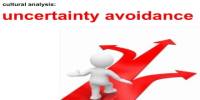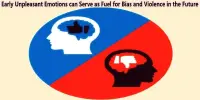Anxiety is a state of alarm, worry, or fear brought on by an impending threat that isn’t always real. In the end, anxiety contradicts trust since it suggests impending danger through imagined emotional or physical dangers.
Anxiety operates as a messenger. When early humans had to negotiate hostile environments and predators, the advice to stay on high alert was adaptive. Threat, though, has a different meaning today.
Instead, those same panic-inducing symptoms of anxiety become attached to modern fears (e.g., Do I have the right job? Did I pick the right partner? What if I made a mistake?). The same antiquated threat-radar mechanism that once guaranteed survival by inciting action now paralyzes via worry.
A System Update for Obsolete Programming –
It’s important to distinguish between anxious symptoms and the connotations attached to them. This entails changing how anxiety symptoms are seen, from being seen as potentially fatal to being seen as straightforward signs of underlying tensions.
Label it.
Anxiety thrives on absolutes. All-or-nothing. Black-or-white. This creates the illusion of safety through certainty. If there’s an absolute right and wrong a path without pain could be paved.
However, this false dichotomy is made for internal comfort and isn’t a true representation of the range of gray areas that exist in reality. Instead, this distortion is made to keep up a sense of security, which usually causes more harm than good. Spending that energy accepting uncertainty is significantly more adaptable than imposing rigid rules and an artificial world where uncertainty doesn’t exist.
Anxiety sells a story of a correct and incorrect choice. The “right” choice will bring infinite happiness, and the “wrong” choice will bring pain. This primes the notion that the key to happiness and pain lies outside of your control instead of trusting your own wisdom.
The ultimate goal is to not only embrace uncertainty but learn to accept and live with it (the good and bad aspects of people, situations, and circumstances) as necessary conditions in life. Whenever you find yourself thinking in absolutes or extremes (e.g., always, never) label that you’ve been cast under the spell of anxiety.
Address it.
Chronic anxiety causes you to abandon your emotional experience, leading to a state of detachment. Instead, think of anxiety as a messenger that something requires your attention.
Next time you feel anxious, become curious about your inner experience. This requires a continuous internal check-in.
Typically, worried thoughts are just the messengers for a more important message that has to be sent. For example, if you simply look at the surface thought (e.g., anxiety about achievement) your worry will drive you toward the solution of achieving the next goal on the horizon.
You won’t get anywhere if you just react to your nervousness without thinking about it. Instead, if you pause and follow the red thread of this thought further, you can find that you are actually striving to overcome insecurities and concerns with self-worth.
Instead of falling into this vicious cycle of relentless achievement, identify the anxiety and how it shows up for you (e.g., where do you feel it in your body? What thoughts are connected to it? And most importantly, how are those thoughts linked to your sense of self?).
Stop resisting and embrace anxiety.
Meet anxiety with compassion. One way to do this is through the Buddhist practice of Tonglen (Chödrön, 2019; Paul, 2019). This is when you breathe in the “unwelcome” (e.g., pain, insecurity, inadequacy) and breathe out the “desired” (e.g., relief, contentment, fulfillment). By displaying the ability to hold and control uncomfortable emotions, this practice breaks the habit of avoiding pain and rewires the brain’s processing of discomfort.
Connecting to the shared experience of pain throughout the world is made possible by visualizing oneself breathing through discomfort. The isolation and helplessness that anxiety maintains cannot coexist with the oneness and power that that connection fosters. Detaching from that fixed position ultimately allows for transformation.
Exploring anxiety with curiosity can teach you something about yourself. Ignoring it will allow it to remain a shadow in your day, arising as intrusive thoughts and consequent physical symptoms.
Break down intrusive thoughts.
Intrusive thoughts are recurring, unsolicited, and persistent thoughts that cause suffering and take you out of the present. Their mission is to be believed as absolute truths and cause doubt. At the core, intrusive thoughts are a mental addiction. They operate as a mechanism to prevent you from accessing more vulnerable feelings. Intrusive thoughts work under the pretense that if you were to follow their orders, then you could avoid the suffering and vulnerability inherent to being human.
Learn to interrupt intrusive thoughts by widening the space between thoughts and your response to them. What you focus on will propagate. Googling, perseverating, talking with friends, and seeking reassurance only feeds the fear, allowing it to sprout.
Learn to interpret intrusive thoughts as symbols.
First, name the anxious thought. This allows for cognitive diffusion (Clark, 2005). Because observing requires a witness, a separation forms between the thought and yourself. With distance comes perspective to dismantle anxiety and reduce its credibility.
Once you have distance, allow yourself to experience the underlying emotion. Usually, there is an underlying feeling of incompetence, self-doubt, helplessness, or unhappiness. These are universal human feelings. They cannot be avoided. Sit with the emotion instead, and think about how your anxiety can be shielding you from this suffering by making you believe that you can overcome it with persistence or action.
For example, you might feel insecure about your appearance, so you spend hours following a rigid exercise plan. Reacting to surface-level anxiety will keep you on a never-ending hamster wheel since the underlying sense of lack can only be controlled inwardly and cannot be overcome by exterior appearance. These feelings enlarge and use more energy the more you suppress, regulate, or control your environment. It’s far more efficient to accept the emotion, experience it, and let it pass.
Check in with yourself regularly.
Start to conceptualize your emotional experience as a river. You could either experience what comes down the stream until it passes or you could avoid uncomfortable emotions until they accumulate and create an obstruction. You need to have the confidence that you can endure any suffering that emotions may bring and come out the other side feeling better in order to be able to experience emotions as they arrive.
If you refuse to experience an emotion directly, it will only return in other ways. This calls for self-reflection, processing of your emotions, and responding to them. You may accomplish this by keeping a journal, paying attention to your body, or setting a phone reminder for a check-in. These are ways of getting comfortable emotionally attuning to yourself and making accurate and descriptive self-assessments.
Sitting with an emotion does not require an action or immediate solution. Instead, make room for it, learn to experience it, and then eventually process it to go on. Anxiety consumes resources. That energy takes up room in your body and psyche. Focusing on anxiety allows it to change, fade away, and make room for more instead of battling it.
















